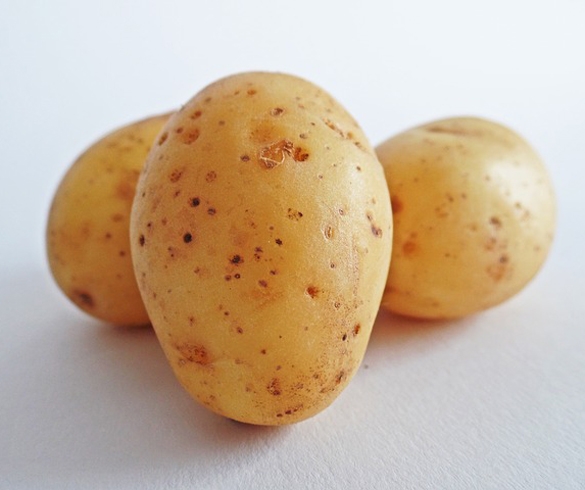
What\’s Eating My Potatoes?
– Potatoes are a fun crop to grow, especially when it comes time to dig for those buried treasures. Unfortunately, there are numerous pests that are also fond of potatoes. Here are the most common and what to do about them.
Colorado Potato Beetle
In spite of the name, these insects can be found in most states. Both the adults, which are yellowish with black stripes, and the larvae, which are dark red or orange with black spots, feed on potato foliage. Check the undersides of leaves for their orange egg masses and rub them off. Dispose of beetles in a can of soapy water. Bacillus thuringiensis \’San Diego\’ kills the young larvae it\’s harmless to beneficial insects, animals, and humans.
Flea Beetle
Flea beetles are tiny, black or brown, and pesky. They chew small holes in plant leaves and can do serious damage fast if they attack young plants. To foil these pests, cover young plants with fabric row covers as soon as you set them out. Keep flea beetle populations low through crop rotation and by maintaining high soil organic matter.
Aphid
These tiny insects can transmit virus diseases. They suck juices from the leaves and stems of potato plants, stunting their growth. Insecticidal soap sprays are an effective control.
Wireworm
Wireworms are the larvae of the click beetle. They\’re a problem when potatoes are planted in a section of garden that was recently in sod. Fully-grown wireworms are 1/2 to 1-1/2 inches long, slender, and brownish or yellowish white. They tunnel into plant roots and tubers, spoiling them. If your soil is heavily infested, contact your Extension Service for advice on solving the problem.
Diseases
You may have a disease problem in the potato patch one year and none at all the next. The weather plays a big part in the health of a potato crop. Moisture and temperature conditions may trigger certain diseases, which will spread rapidly through the potato rows. But there\’s no need to simply sit back and let the weather determine the fate of your crop.
To protect your crop, rotate the potato plot each year. Plant healthy, certified seed potatoes. If you have severe disease problems, consider using a standard potato dust or spray regularly throughout the season. These are chemical mixtures that prevent some diseases such as late blight. They thwart some pests, too, such as the Colorado potato beetle. If you use a potato dust or spray, read and follow the directions carefully. To be effective, most standard dusts must be applied to the potato foliage every 7 to 10 days, beginning when the plants emerge from the ground.
The fungus that causes common scab lives in the soil for many years. It\’s not active when the soil pH is below 5.4, so if you have a serious scab problem, take a soil pH test. You may want to lower the pH by adding wood ashes to the potato bed. Avoid lime, which raises the pH.
Early Blight
Early blight injures foliage and reduces overall yields. Affected leaves develop small, dark brown spots that often grow in size until the entire leaf dies. Gardens in central, southern, and eastern states are most susceptible. Planting certified seed and mulching with hay can prevent this disease.
Late Blight
Late blight is caused by the downy mildew fungus (Phytophthora infestans), which triggered the Irish crop failures of 1845 and 1846. The first sign of the disease is water-soaked areas on the leaves that turn brown and black. The disease often strikes during cool, wet weather and may spread rapidly if the weather warms up. Plants can die in a severe case, and potatoes can be seriously affected, especially in storage. Plant certified seed and use a potato dust to guard against late blight.
Mosaic Virus
Aphids can spread mosaic viruses, which cause potato leaves to curl and appear almost two-toned (light and dark green). Mosaic occurs throughout the United States and reduces the harvest, but it doesn\’t kill the plants. \’Kennebec\’ and \’Katahdin\’ varieties have some resistance to certain kinds of mosaic. See \”Aphid\” above for control measures.
A former floral designer and interior plantscaper, Kathie Bond-Borie has spent 20 years as a garden writer/editor, including her current role as Horticultural Editor for the National Gardening Association. She loves designing with plants, and spends more time playing in the garden – planting and trying new combinations – than sitting and appreciating it.





























